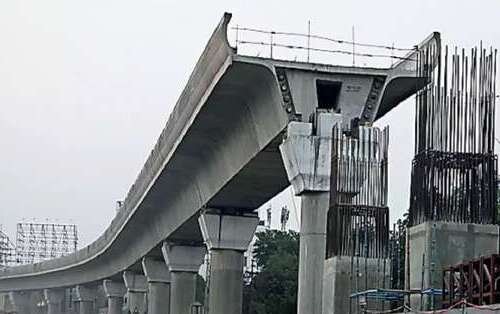
Union Cabinet Approves Rs. 15,611 Cr. for Phase-3 of Bangalore Metro Project
Union Cabinet has approved an amount of Rs. 15,611 crore for development of two elevated corridors under Phase-3 of Bangalore Metro Rail Project. This information was given in a PIB release dated 16th August 2024.
Bangalore Metro Project’s Phase-3 to Commence Operations by 2029

Bangalore metro’s Phase-3 is expected to be operational by 2029. This Phase-3 project will comprise two elevated corridors with a combined length of approximately 44.65 Km.
After the completion of Phase-3 of Bangalore metro project, the city will have a metro rail network of about 220.20 Km. Currently, the city has two operational metro lines, Purple Line and Green Line, which are part of Phase 1 of the Bangalore Metro project. Phase 2 of the project is still under construction.
Details of Corridors Under Phase-3 of Bangalore Metro Rail Project

The first corridor of Bangalore metro’s Phase-3 will be 32.15 Km in length and will connect JP Nagar 4th Phase to Kempapura (along Outer Ring Road West) in Bangalore. This section will consist of 22 stations. These stations will be developed at Kempapura, Hebbal, Nagashetty Halli, BEL Circle, Muthyalanagar, Peenya, Kanteerava Nagar, Freedom Fighter’s Colony, Chowdeshwari Nagar, Sumanahalli Cross, BDA Complex Nagarbhavi, Papireddy Palya, Vinayaka Layout, Nagarbhavi Circle, Mysuru Road, Dwaraka Nagar, Hosakerehalli, Kamakya Junction, Kadirenahalli, JP Nagar, JP Nagar 5th Phase and JP Nagar 4th Phase.
The second corridor will run from Hosahalli to Kadabagere along Magadi Road and will cover 12.5 Km. There will be a total of nine stations on this line, namely Kadabagare, Kamath Layout, Byadarahalli, Herohalli, Anjana Nagar, Sumanahalli Cross, Kamakshi Palya, KHB Colony and Hosahalli.
Commenting on this development, Mr. Siddaramaiah, Chief Minister of Karnataka, mentioned in a post on his X (Twitter) account “This Rs. 15,611 crore investment will connect our city’s industrial and IT corridors, empowering the people of Karnataka. The Karnataka government will ensure this transformative project is completed on time, enhancing the quality of life for all our citizens”.
Multi-Modal Hubs in Phase 3 of Bangalore Metro
According to PIB release, out of the total stations to be developed in Phase 3 of Bangalore Metro, 10 stations will be designed as multi-modal hubs. These hubs will facilitate interchange between existing and upcoming metro lines and also provide connectivity with Bangalore Metropolitan Transport Corporation (BMTC) Bus stands, Indian Railway Stations, and proposed Bengalore Suburban (K-RIDE) Stations.
These hubs will be located at JP Nagar 4th Phase, JP Nagar, Kamakya, Mysore Road, Sumanahalli, Peenya, BEL Circle, Hebbal, Kempapura, and Hosahalli.
Union & State Govts. to Invest in Equity, External Funding to be Secured
According to media reports, the Union Government and Karnataka government will invest approximately Rs. 2,037 crore each in equity for Phase-3 of the Bangalore Metro project. Apart from this, the project will secure Rs. 7,577 crore funding from external (foreign) sources. Additionally, the Union Government and Karnataka state government will each provide debt of Rs. 489 crore to Bangalore Metro Rail Corp. Ltd. (BMRCL) for the payment of central tax. BMRCL will also be extended Rs. 2,019 crore as debt by Karnataka government for land, rehabilitation, and resettlement expenses.
Expansion of Bangalore Metro to Enhance Connectivity
The development of Phase 3 of Bangalore Metro will significantly enhance connectivity across western part of Bengaluru. This phase will link key areas of the city, including Peenya Industrial Area, IT hubs on Bannerghatta Road and Outer Ring Road, textile and engineering manufacturing units on Tumkur Road, and Bharat Electronics Limited (BEL) Bengaluru.
In addition, Phase 3 will improve access to the southern parts of the city, Outer Ring Road West, Magadi Road, and various neighborhoods, thereby increasing overall city connectivity.

